Rock, (paper), paper, (paper), scissors, (paper)
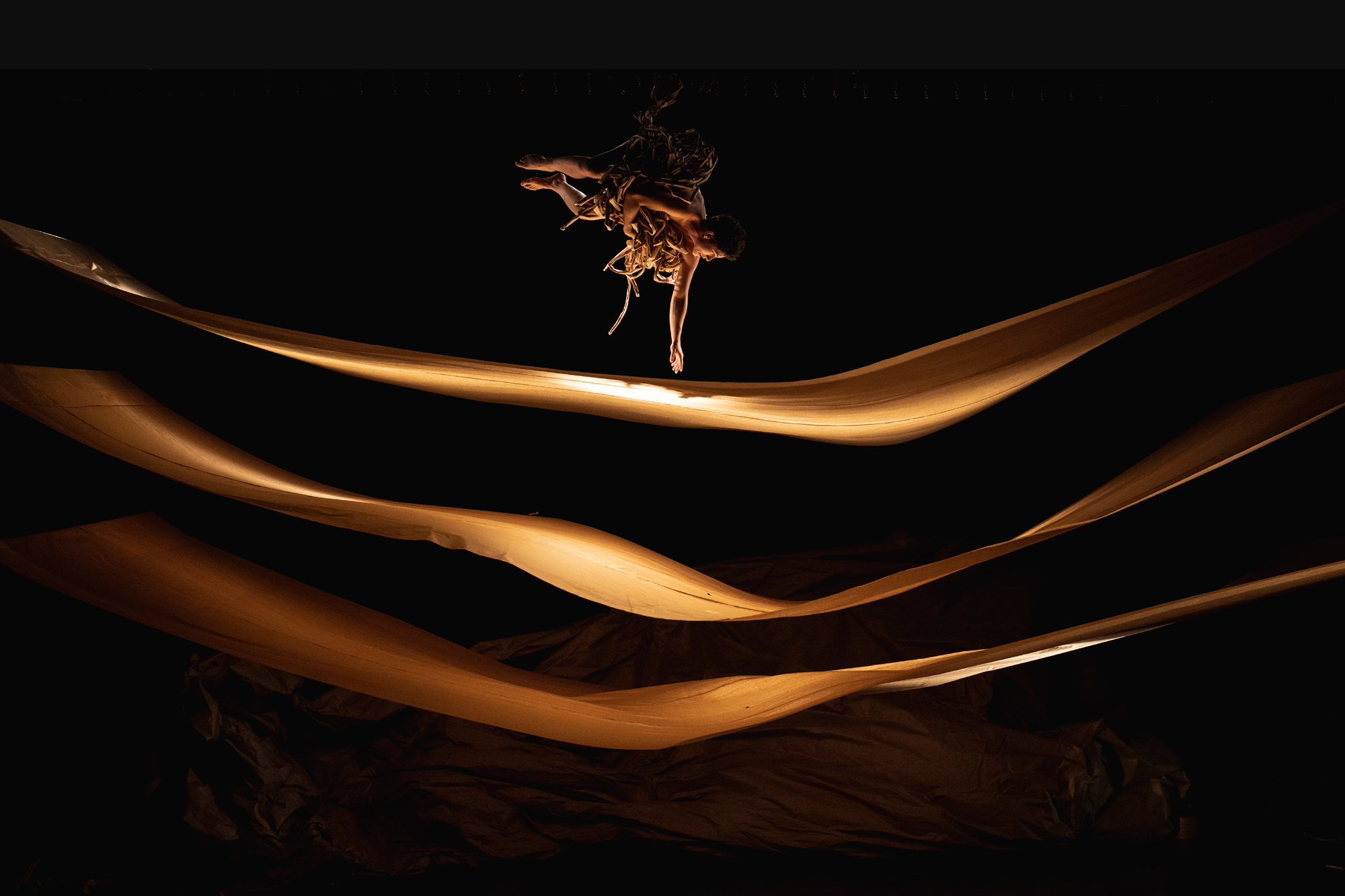
PLi by the circus and visual artist Inbal Ben Haim was shown in SMELLS LIKE CIRCUS 2024 last January in Gent. The circusnext Laureate 2020-2021 and now associated artist, together on stage with Domitille Martin and the performer Alvaro Valdes, shows her delicate and powerful mastery through the mutation of imaginary landscapes. With Alexis Mérat (folder-paper crusher) and Domitille Martin (plastic artist and scenographer), they invented a new suspension apparatus made of aerial paper rope, shaping an acrobatic and poetic performance at the crossroads of circus and visual arts.
Paper has been with humans for centuries, in many forms and shapes. Paper to keep notes, diaries, letters, archives, memories. Paper in posters and postcards, in folders and sticky notes, in books, magazines, and newspapers. Paper to bake, make furniture, toys, or construct just about anything. Paper towels and toilet paper, but also sheets of paper held together with tape to make a tiny football, used to play with during school breaks between classes. Also, in recent times, paper has been recycled and reused. In sum, paper is universal and commonplace.
Accordingly, paper is all over the stage in PLi, the prize-winning performance by the Israeli circus and visual artist Inbal Ben Haim. Next to her is her team: Domitille Martin, an artist and set designer and the performer Alvaro Valdes, who alternates his presence on the tour with Alexis Mérat, a visual artist, an engineer specialising in paper and co-author of the piece. Together they tested various ways of folding, creasing, and twisting the paper to increase its resistance. Interacting with the material in countless poetic and visually stimulating ways, Inbal questions the vulnerability and strength of paper and humans next to each other, or against each other. For Inbal, as she mentions in this podcast interview with the director of PuSh festival: “Circus is a place for meeting and connecting different art forms, practices, and cultures, and also a place of engagement between people, bodies, and objects”.
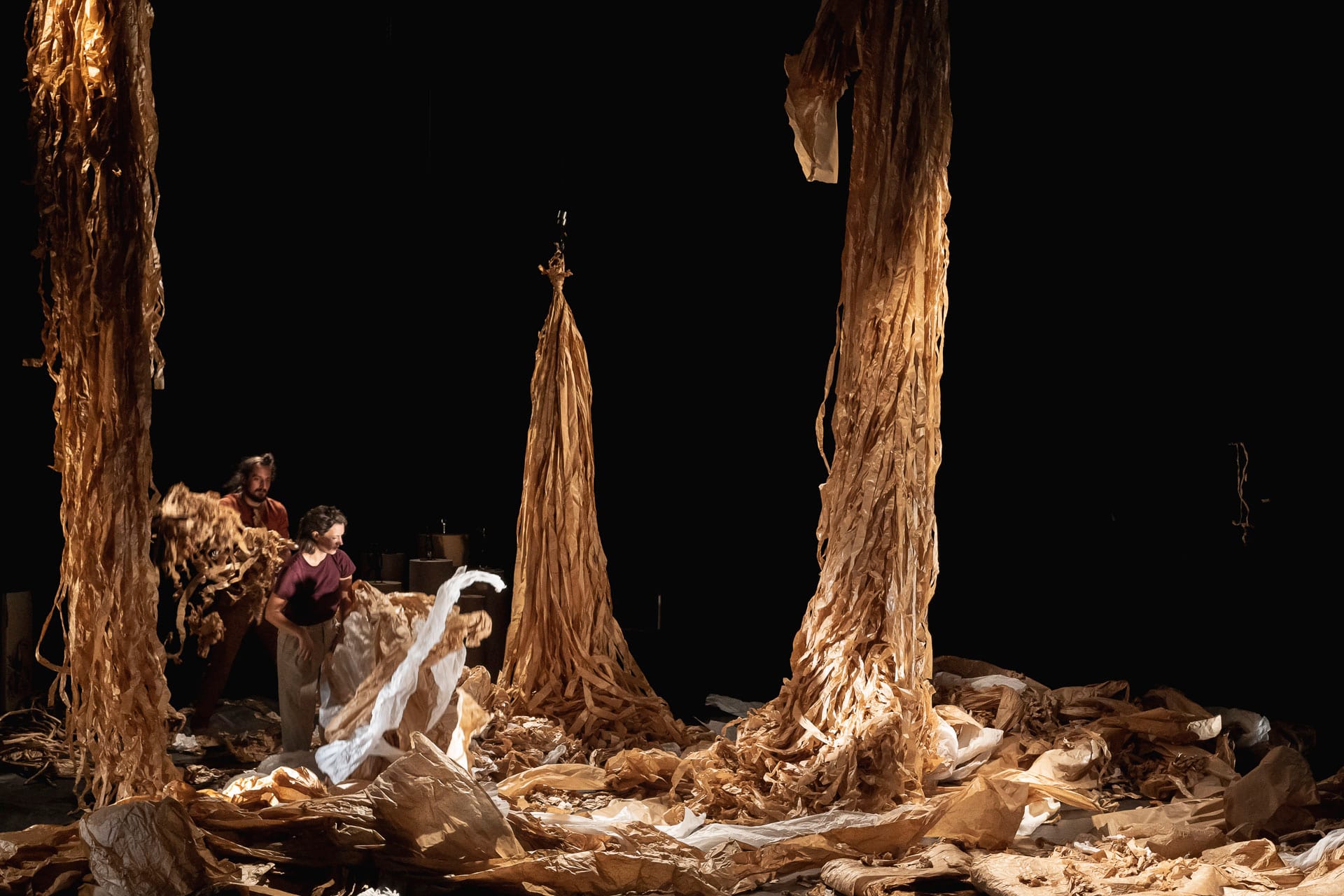
Being both a circus and visual artist, Inbal has created a method of engaging with paper on stage starting with a collective slow and meticulous kneading process. The audience sees all three artists going through their methodical and careful process, building up the stage, props and tools used throughout the performance. Following this ritual, the audience’s patience is challenged, as they need to be immersed into the slow rhythm and it takes a while until everything is ‘’ready’’. Folded like origami, the paper seems admired and respected as a powerful social material, as the Japanese tradition treats it. To immerse themselves in the Japanese paper tradition, Inbal and Domitille travelled to Japan in July 2023, to do a research laboratory with Japanese circus artists based on washi, traditional Japanese paper. The programme included working with the body and materials in different spaces, including the heart of a washi factory and sharing experiences with Japanese audiences.
As she admits, Inbal is fascinated by many Japanese contemporary and traditional artists, who are philosophically and artistically involved in creating shapes and spaces of different scales. She is also influenced by Butoh dance and the spiritual concept of wabi-sabi, the search for beauty in imperfection. This does not imply failing on purpose, but rather accepting that there will be flaws and wrinkles in everything, both circus and material bodies, that cannot be controlled and timed to perfection. In PLi, all the material is on stage, nothing is hidden, and the master’s tools are there for all to see. We’re in the studio. This shows the audience that there is no trick, and the spectacularity of the performance lies in this non-perfect process, happening in every performance all over again. During Pli, paper is twisted, folded, cut, woven, and manipulated to be used as a wall, a rope, an umbilical cord, and even a ‘’skinny costume’’ on top of Inbal’s skin, which is ripping bit by bit after every tiny movement. Due to her deft touches on the paper, you are left wondering and imagining to which extent it could be stretched and used, and what is allowed and prohibited in this new toy, tool, or companion on stage.
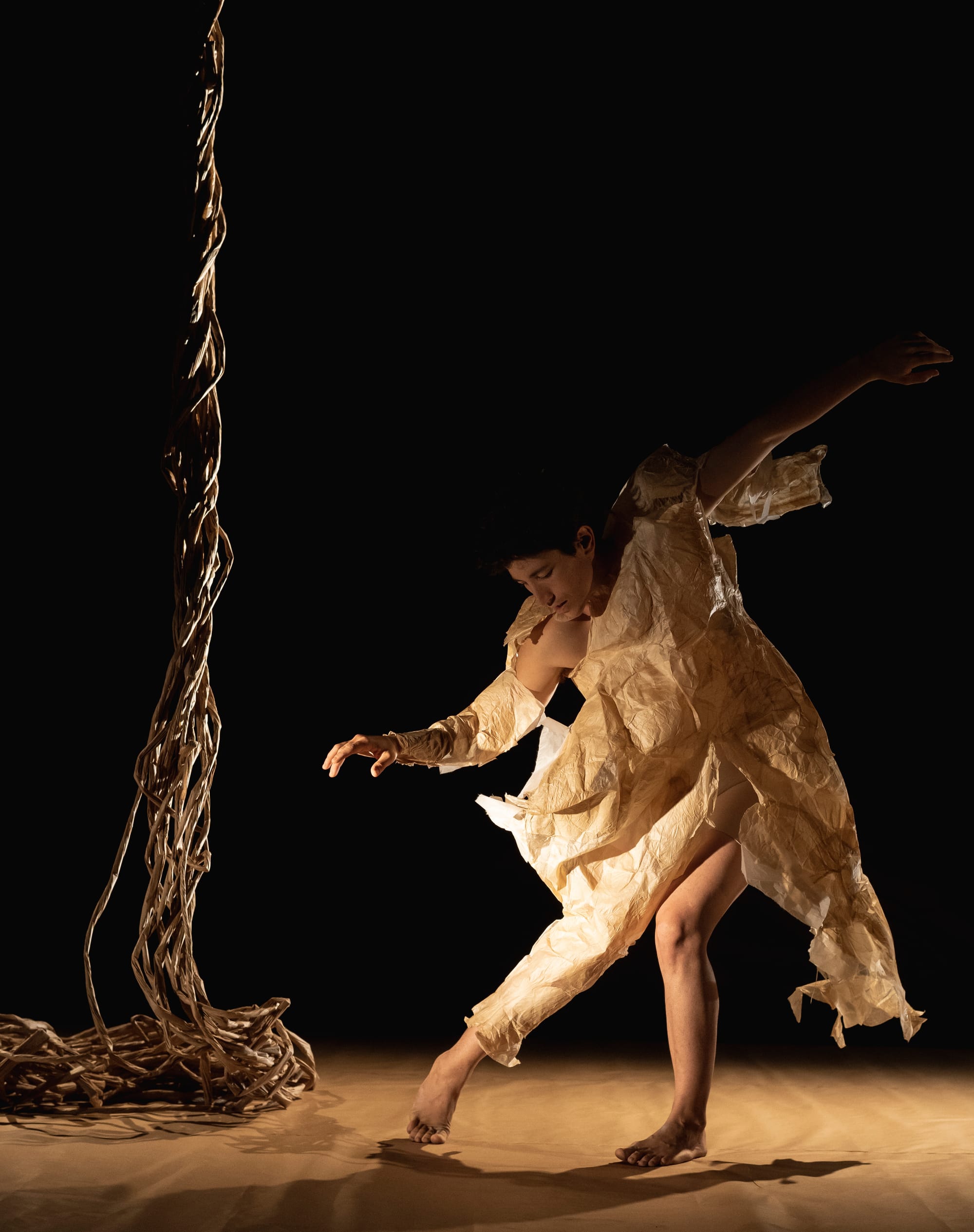
Careful though. Let’s correct something. Paper is not only manipulated by Inbal, but it manipulates her back. It is essential to note that for each performance the paper used cannot be the same. After each representation, the paper, which is now in shreds, is recycled and reused later. This means that the paper universe on stage is constructed each time for each occasion, leaving it susceptible to temperature and humidity conditions in the room. As it is twisted and folded every time, the team and Inbal need to be very attentive and listen to it, and its state, as it can break at any time when Inbal climbs it, hangs onto it, dances with it or fights it.
Similar to when hand-to-hand acrobats need to feel their partner, the human body needs to trust the object's body. It must be in constant dialogue with it and adjust accordingly, making sure it doesn’t fail and rip at the wrong moment. So, it is not only the audience’s patience that is tested but also their perception, as they question how fragile the paper is and whether it can break for real in this landscape created over and over again. In that way, as an audience member, you are transported between imaginary universes that could be a child’s room, a dancefloor, or a fighting pit, while admiring the many different uses and forms the paper can take. It is like being a child again, questioning what is next in this fascinating adventure in front of you, whilst also watching it with adult eyes and being cautious of the dangers involved.
By playing with the rhythm, Inbal oscillates from spectacular to intimate, going from showing vulnerability and close attention to taking risks and appearing fearless. In this path, she’s questioning whether the human body or the object’s body is more vulnerable, thus commenting on how society is often pushing us to meet unattainable standards of images and bodies. Even though the bodies of circus artists are perceived as superhuman, the vulnerability shown in PLi connects and resonates with the audience in a deeply human way. Regardless of how trained circus artists are in taking ‘’calculated risks’’, it still needs a ‘breakable’ human body to trust an object’s body, in this case, a paper to hold it until the last millisecond before the drop. Going against the socially dominant image of hyper-individuality, the value of care and trust in collectivity prevails here.
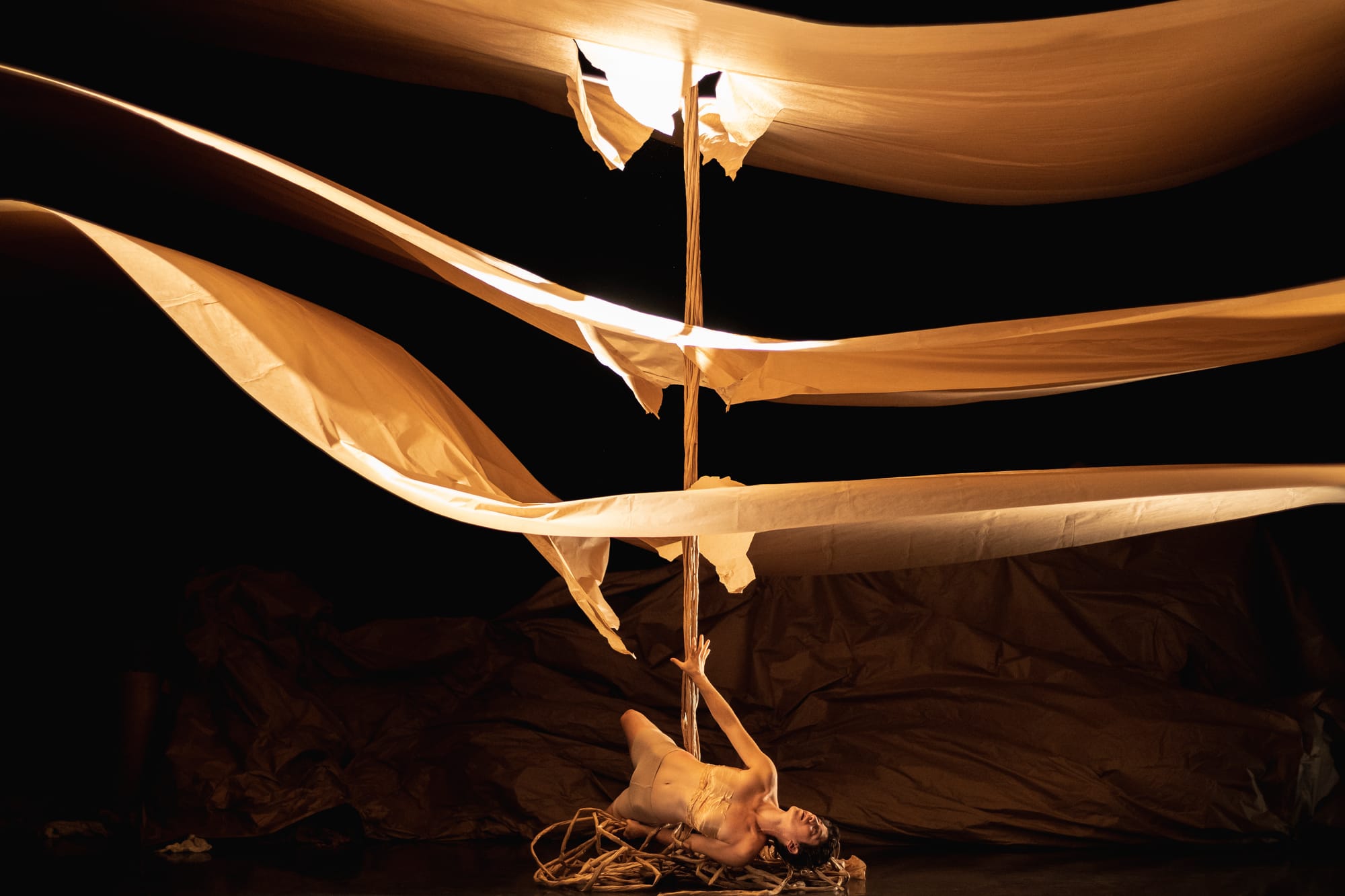
Inbal Ben Haim creates a sensory-rich performance at the intersection between the visual and the performing arts, in which all senses are activated. Paper, of course, has a tangible feeling for everyone, it has a specific smell (think about opening a book and smelling it), and sometimes it can also be edible. In Pli, Inbal creates strong visual images not only for the eyes and the imagination, but also for the ears, as the paper is folded, twisted, and cut, creating a crackling noise - like stepping on fallen leaves in the autumn, which is both satisfying and distressing at the same time.
The tension in the audience is palpable, and the suspense builds up, as everyone is holding their breath just before Inbal rips the last bit of the paper rope that is holding her and after a few seconds that feels like an eternity, drops onto the mat below her. In Pli, emotional memory is constructed on stage, as the whole performance evokes something from childhood. It feels like watching the pages of a sketchbook come alive through careful and courageous movements of bodies and paper. And in that, it could be said that this research could hint at redefining ways of being on-stage and off-stage between humans, bodies, and objects. Through this new apparatus that is literally built over and over again, Inbal shows how the idea of humans as masters and objects as tools, is a binary old-fashioned approach that needs to be re-interpreted and challenged, with paper imposing its specificities and preferences.
